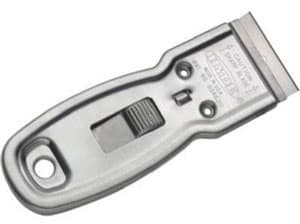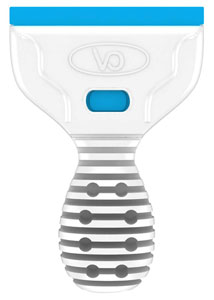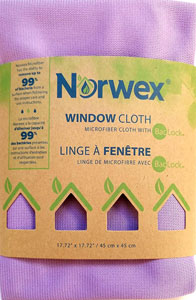There is no point in having the most beautiful aquarium if you cannot see through the aquarium itself! Algae on the inside and dust on the outside can be enough to really change to look of your home’s ‘Show Piece’!
Aquarium glass can be scratched while cleaning. Acrylic and Starfire Glass aquariums are softer than traditional glass and can be easily scratched if using the wrong techniques or tools. Be particularly careful of sand grains on cleaning pads and match the tool to the tank material.
I have seen some stunning aquariums ruined by a single grain of sand pulled across the tank glass during cleaning and the entire pane became covered in scratches that never came out! Don’t let this happen to your beautiful new home addition! Here are some wise words to live by…
The first thing to establish is what is your aquarium made out of…
What Are Aquariums Made Out Of?
Generally, most home aquariums will be manufactured using one of these materials:
- Regular Glass
- Starfire/Starphire or Low-Iron Glass
- Acrylic
Regular Glass Aquariums
Regular glass is the most popular glass for home aquariums. It is the toughest and hardest to scratch but it can only build aquariums of certain shapes and sizes. For most hobbyists, a regular glass aquarium will be the best fit for their home.
Starfire/Starphire or Low-Iron Glass Aquariums
Low-Iron or Starfire as the trademark is known is a glass of superior clarity and is becoming more popular within the hobby. Regular glass has a slight green tint to it whereas Starfire is clear.
The clear glass really can make a colorful reef pop, but it is softer and can be scratched if not careful!
Acrylic Aquariums
This is used for many customed shaped and very large aquariums. It gives better clarity to the aquarium but it can be scratched with even the smallest grain of sand, wedding ring or passerby. Acrylic safe tools and techniques are needed to safely clean an acrylic aquarium.
Is The Aquarium Empty Or Full?
This is the next question…
Are you getting ready to clean a used aquarium you picked up for a steal or you’re moving the aquarium to your new home and want to clean it all to start from scratch in your new home?
or…
Is the aquarium cycling and you are starting to get algae growing on the glass and you want to keep the empty glass box looking nice?
How Do You Clean The Glass Of An Empty Aquarium?
Let’s get that old tank looking like new…
Cleaning The Inside
Coralline Algae and white marks are probably going to be the most common issues you are going to face when embarking on this mission.
I find the best method is to place a 50:50 mix of warm water and white vinegar into the bottom few inches of the aquarium.
After putting on some goggles and rubber gloves, use a sponge to dampen down all the side panes and allow the vinegar to soak into every part. Repeat for several minutes.
The vinegar will remove the white deposits with minimal scrubbing. A toothbrush and a Magic Eraser will also be good for the seams and the hard to reach places.
This method works well for all aquarium types, glass, and acrylic.
The best way to remove the Coralline Algae on a GLASS aquarium is by using a scraper with a razor blade like this:

** Be very careful to stay away from the silicone seams with the blade! **
(I have witnessed a tank seam split when a scraper blade came too close!)
The best way to remove the Coralline Algae on an ACRYLIC aquarium is by using a scraper designed for acrylic like this:
You still have to be careful using these and the blade can wear out fairly quickly if cleaning a large aquarium, but you can purchase new blades for them.
Rinse well with lots of freshwater to see the results.
Cleaning The Outside
A Magic Eraser and warm water will return the glass and the trim to its former glory. I also find using a toothbrush to get under the trim edges will really help to make it gleam again.
How Do You Clean The Glass Of A Full & Running Aquarium?
Cleaning The Inside
The glass on my aquarium gets cleaned about every 2 days. I like to keep my aquarium looking as new as I can. The rate at which the algae grows on your glass will dictate when you wish to clean it.
For GLASS aquariums I recommend a magnetic scraper with a razor blade attachment. It takes me 2 minutes to drop it in and do my whole 75 gallon aquarium. The razor blade just peels off the algae in sheets which then send my fish into a feeding frenzy.
The MagFloats and Flipper Series are great for small and medium aquariums and the Wooden Algae Free are good for large aquariums, but be careful with those, their magnets are VERY strong and can pinch your fingers when snapping them together – They Hurt! Trust Me!
For Acrylic aquariums, I still recommend the magnetic scrapers but without the blade attachment. Even with the Acrylic-Safe blades, I have seen a brand-new $30,000 aquarium scratched by one. Just mag-clean the glass more often and you will not need a blade on an acrylic tank.
You can find a great selection of Magnetic Scrapers HERE at Amazon.com
For the corners, seams and overflows I recommend a combination of the following:
- New, unused toothbrushes
- Algae scrubbing pads for the type of aquarium (Glass or Acrylic) – Great for use by hand
- Algae scrubbers with handle for the type of aquarium (Glass or Acrylic)
You can find a great selection of Algae Brushes HERE at Amazon.com
Cleaning The Outside
Soft cloths, paper towel and a little bit of clean water will work miracles to buffing the glass to a shine. Generally, all I find on the front glass of my aquarium is greasy fingerprints off my kids!
A cloth that I was given by my wife is from a company called Norwex.(Fella’s – NEVER take a cloth without asking! You will never hear the end of it if it’s a special $50 cloth and you ruin it!).
We use it to clean all the glass in our house and all it requires is a bit of water from a spray bottle and it works awesome! The fewer chemicals we can use in our homes the better in my opinion.
I managed to find the Norwex Cloth HERE at Amazon.com for any of you that may be interested in it. My wife loves their products!
They are a little expensive but a little goes a long way and their cloths are great (Jeez, I sound like a Norwex Rep hahah. I’m all for the simple life, and they make cleaning the house simple!) I’m, sure there are Norwex reps in your area! Give their products a try!
How To Remove Limescale From Aquarium Glass
Limescale can occur in aquariums where the city water is ‘Hard’. In other words, contains a lot of calcium salt ions. When the water evaporates these ions get left behind and then dry to a crust. Sometimes they can be hard to remove, but this is where a little white vinegar helps.
You will generally not see the white deposits when the aquarium is full of water as they remain dissolved, but when you pick up a second-hand aquarium you could find it covered in white.
The same 50:50 mix of warm water and white vinegar with some gentle scrubbing should see it removed. If the stains remain stubborn you could leave a cloth soaked in the solution on the stain overnight, then try scrubbing the next day.
Always rinse well with plenty of clean water.
Cautions When Using Magnetic Aquarium Cleaners
One word SAND!!!
The sand bed is your nemesis when it comes to cleaning your glass. Even one grain of sand can scratch a glass tank if it gets trapped in the sponge of a Scrubbing Pad or the Magnetic Scraper.
Never let your sponge or mag-scraper get within one inch of the sand bed and ALWAYS inspect your mag-scrapers faces before each use. I like the blade attachment on my Mag-Float as it allows me to get close to the sand while keeping the scrubbing surfaces far away.
If you are unable to get a mag-scraper with a blade in your tank because the tank is tiny then scrub to within one inch of the sand then clean the rest with a hand scraper like the one above or a toothbrush.
SAND vs GLASS = GLASS LOSES!
Further Cleaning Articles
To help keep your tank pristine you may find these articles helpful:-




